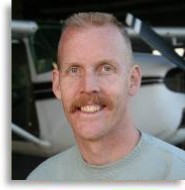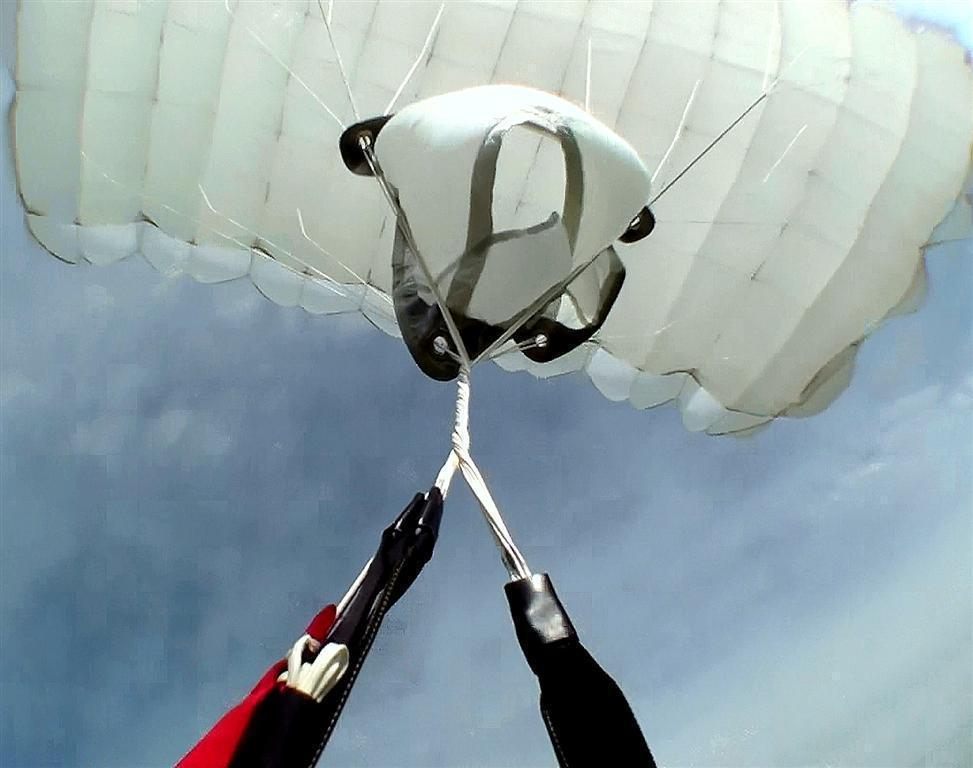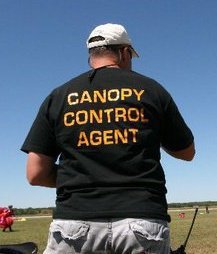Recommended Posts
riggerrob 644
The primary goal of collecting accident/incident/malfunction/close call statistics is to recognize patterns before they kill too many people. Good statisticians know how to "mine" accident data for patterns, while quietly forgetting the names of the guilty bastards.
We do agree that no AIM report - submitted to USPA/CSPA/BPA/APF/FFP, etc. should ever be allowed as evidence in court (with names intact). That would be a breach of confidentiality.
Ron 10
QuoteAre you going to run scared from every dagnab lawyer on this planet?
Not being stupid is not the same as running scared. I don't tend to provide the lynch mod with the rope.
QuoteGood statisticians know how to "mine" accident data for patterns, while quietly forgetting the names of the guilty bastards.
See even you hold a bias about the topic.
And lawyers know how to put those names back when they sue.
QuoteWe do agree that no AIM report - submitted to USPA/CSPA/BPA/APF/FFP, etc. should ever be allowed as evidence in court (with names intact). That would be a breach of confidentiality.
Yet it has ALREADY happened.
Idiocy is to ignore the risk and blindly provide the data that will be used to prosecute you.
IT HAS ALREADY HAPPENED.
riggerrob 644
If you worry about your accident report coming back to bite you in court, simply submit it (via a third party) to USPA/tandem manufacturer, etc. with names, dates and locations blank.
If a lawyer still wants to "extrapolate" your data, he will have a thin case in court.
My dim view of lawyers was learned in divorce court.
As I have said previously, any lawyer is able to quote anything I write on dz.com ... PROVIDED he pays my $10,000 - per quote - Expert Witness fee. I have already assisted Dan Poynter and the RCMP in investigating parachute accidents.
If the fool ... er ... lawyer ... forgets to quote me, or pay me, I will ask the judge to rule his evidence inadmissible in court.
Maybe a more blunt retort would be "Massage this ..." ... as I drop my pants in court ...
Hah!
Hah!
Rob Warner
FAA Master Rigger
CSPA Rigger Examiner
Strong Tandem Examiner
QuoteWe do agree that no AIM report - submitted to USPA/CSPA/BPA/APF/FFP, etc. should ever be allowed as evidence in court (with names intact). That would be a breach of confidentiality
Confidentiality based on what? Who has a legally backed confidentiality agreement with the USPA or otherwise? Even if you did, what is the consequence to them for breaking it? Lawyers and doctors can be disbarred or lose their medical license for breaking confidentiality, what penalty would the USPA suffer that it would be worth holding on to confidential info if releasing that info would shake them free from a lawsuit?
The penalty for breaking confidentiality would have to be greater than that of being named in a lawsuit, otherwise, the USPA would dodge the lawsuit bullet by releasing said info, and deal with the lesser problem of breaking confidentiality. Of course, that's all based on a non-existant confidentiality agreement.
What we need is an uninterested party, immune to skydivign related lawsuits, to submit the reports to. Piltos have the ASRS (Aviation Safety Reporting System) where they can confidentaily file a report in the wake of an incident. ASRS will remove identifying factors in the report before putting in their database, and the FAA has agreed to waive fees or punishments for a pilot who files a report with ASRS in the wake of unintentional violations. Pilots are encouraged to file based on the confidentaility and the amnesty offered by the FAA, but more importantly, the ASRS is motivatred to adhere to it's confidentialty agreement based on the idea that as soon as they break it, pilots will be less forthcoming and likely to submit reports. Seeing as collecting and disseminating these reports are the sole purpose of the ASRS, losing the confidence of the flying community would be a death sentence for the ASRS.
The USPA, in comparison, has other interests to protect, and those could come into conflict with maintaining confidentiality.
pchapman 281
Quote[Piltos have the ASRS (Aviation Safety Reporting System)
I was wondering about that. Presumably they have some good confidentiality protections because they are the government.
Is there anything in the FAA / NASA ASRS rules prohibiting skydivers from flooding their system with malfunction reports etc? Would they deep six the reports or be obligated to catalogue them? After all, skydivers are users of the airspace, have to follow FAA rules and use TSO'd equipment.
It probably wouldn't do much to make the FAA move beyond its usual glacial pace when it comes to skydiving, but it is a kind of fun thought to swamp them with reports and try to get official protection of a confidential reporting system for skydiving.
QuotePresumably they have some good confidentiality protections because they are the government.
The confidentiality comes from the fact that the ASRS only has one function, and that is to get pilots to file honest, timely reports. If they were to break the confidentiality, pilots would lose their confidence in filing reports, and go back to trying to sweep things under the rug.
In terms of skydivers using that system, I think that reporting every malfunction across the board is overkill. Every stuck brake, toggle fire, or uncocked PC doesn't need it's own report.
I think there's some merit to the idea of reporting tandem malfucntions because tandem rigs are being jumped by 'professionals' in a commercial environment. I would expect the number of stupid malfunctions to be lower, and that there would be more to learn from the other malfunctions and that it would be worth sifting through all the tension knots to get to the 'good stuff'.
gowlerk 2,309
We ensure confidentiality by a policy of receiving the report, stripping the needed data from it, and then destroying it. That is the only way to ensure that it can't ever be accessed by a lawyer or any other officer of any court.
Once years ago when I was on the CSPA BoD I was called to testify at an Inquest into a local fatality. They wanted to know why CSPA would destroy the report filed by the principals of the DZ. They were VERY unhappy when I explained to them that the policy was in place to give people confidence that it could never be subpenaed. I would say that the Judge's complexion darkened several shades when he realized the logic of the policy.
This teaches two lessons. First, it is possible to protect reports but still gather good statistics. And second, if you want people to give you information you need to protect them and make it worth their while.
You can always preach that it is for the good of the sport that you want info, but in reality why should I stick my neck out if you can't protect me?
Ken
Quote
QuoteI was not at PIA, the following are notes a friend took at the seminar. I'm surprised that I didn't see it already up here. All tandem manufacturers teaming up to agree on some standards they'd like to see.
From PIA 2011 in Reno, February 15
presenters: Mark Procos UPT, Bill Morrisey of Strong Enterprises, Tom Noonan PD, Nancy LaRiviere Jumpshack, Frank Carreras German TIE
Present in attendance of approximately 150 people including: Bill Booth UPT, Ted Strong, Jay Stokes USPA President, Jim Crouch USPA Director of S&T, Ed Scott USPA Ex Director, almost everyone a TI, 20 or so T I/E’s, represented from the U.S. and all continents internationally as well.
19 commandments of Tandem Parachute Operations
1. No jumpers under the age of legal majority
2. Waivers – A Must
3. Tandem Student harness should be in jumpable configuration before boarding a/c
4. Minimum Exit Altitude 7,500’ (normal tandem operation)
5. Drogue must be deployed within 3 to 5 seconds.
6. Handle Checks in the order you would use them. (before board, in a/c, before exit, after tossing drogue)
7. RW must cease by 6,500’. There will be a briefing, which includes the student.
8. Pull Drogue Release by 5,500’.
9. Under Canopy by 4,000’.
10. Maintain adequate [100’] separation under canopy.
11. No Hook Turns. (No turns over 90 degrees under 500’)
12. Stabilized on final by 100’. There is no reason not to.
13. Report any cutaway … or equipment failure that may or may not have resulted in a cutaway, whether or not there is an injury. Report any injury.
14. Videographer (outside) Minimum experience: a) 500 RW jumps with 100 camera jumps, a currency requirement of 100 jumps in the previous year, or b) 300 jumps, and has passed air skills of a USPA Coach Course.
15. 100 tandem jumps before using a Handcam.
16. Currency requirements - 3 tandems over the last 90 days
a) under 500 tandem jumps – Strong used to say 1 jump every 30 days
b) over 500 tandem jumps – Strong used to say 1 jump every 90 days
--if multiple ratings, “a tandem jump is a tandem jump” according to Strong. Not sure hold the “old” currency will change; more on that later.
17. Adhere to Manufacturer’s maintenance and packing instructions
18. There must be a minimum passenger briefing (before boarding a/c) according to FAR 105.45
19. All TI’s will be required to participate in the Continuing Education Module. The test will be available online. The format will be 3-question multiple choice.
Any one see what was on page 64 of Parachutist this month? or did we all stop and go "Uh Oh" at the FAA Boss' Letter?
Matt
So, start being safe, first!!!





Yes, but I can think of at least once where the USPA (actually a BOD member) released information about an accident to the plaintiffs in a lawsuit against a DZO.
IIRC the BOD member was John DeSantis and it was about a fatality at a Nevada DZ. 1997/98????
I think a camera guy collided someone else right after opening.
There was a lawsuit and the BOD member released several hundred pages of information without a court order.
This is why I think reporting any incident (like a cutaway where nothing else happened) is a bad idea. That data can and will be used in lawsuits.
Share this post
Link to post
Share on other sites